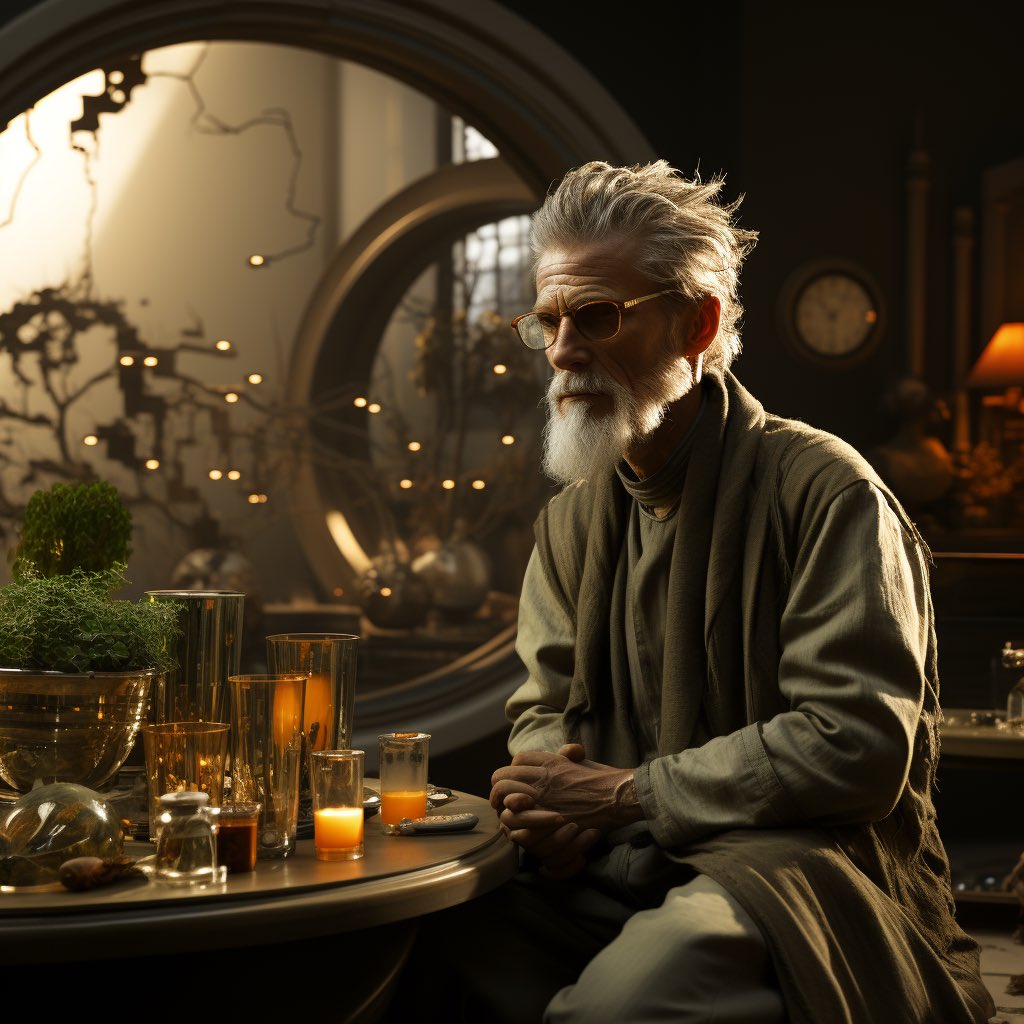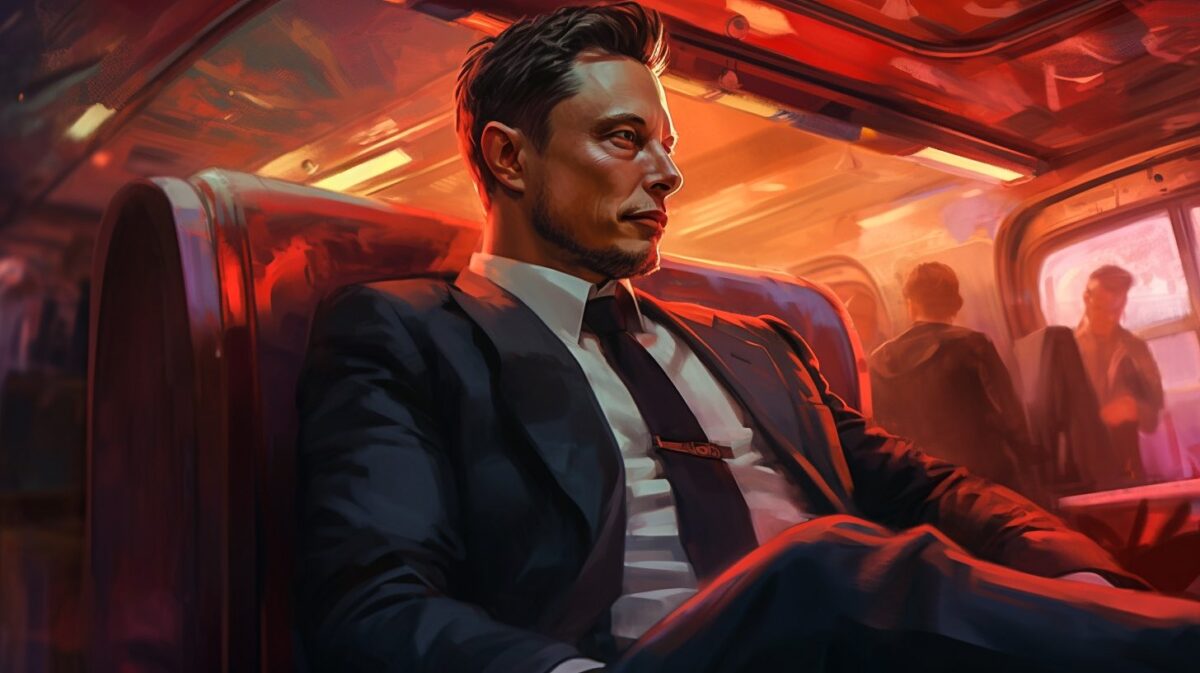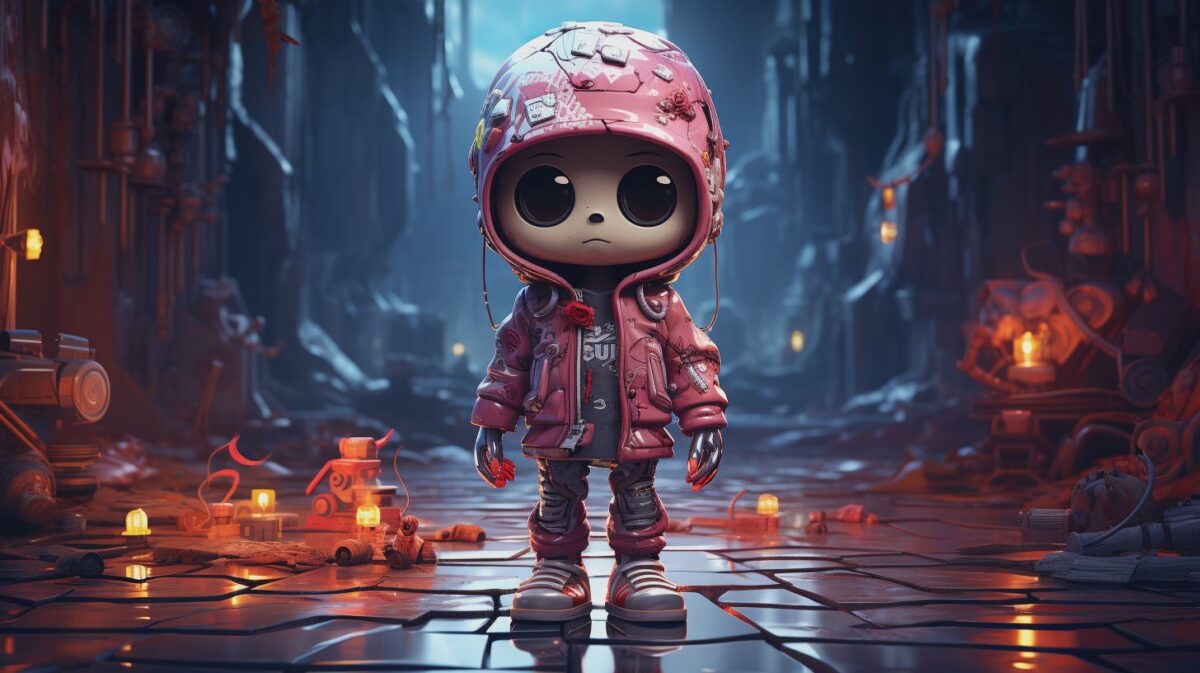At first glance, Dr. Yue Wu looked like just another disheveled programmer – blue hair sticking up, Skullcandy headphones around his neck, eyes bloodshot from staring at code all night. But behind this unassuming exterior lay one of the most brilliant minds in AI.
Wu was about to run an experiment that could shake the foundations of reinforcement learning to its core. For decades, researchers believed trial-and-error was the only path to mastering complex games. Wu was convinced there was a shortcut – language.
In a few hours, Wu would pit his sassy language model AI Claude against the notorious game environment Crafter. If Claude could exceed state-of-the-art AI merely by reading the instruction manual, it would be a watershed moment for the field.
But not everyone was convinced. “He’s mad if he thinks mere words can outsmart decades of learning algorithms,” scoffed Dr. Wu’s critics. Little did they know how utterly Claude was about to prove them wrong. The ivory towers of artificial intelligence were about to come crashing down.
This Scrappy Startup’s AI Just Achieved the Impossible
Dr. Wu hadn’t even fully explained his crazy idea before Claude interrupted – “Just show me the instruction manual for this Crafter game already.” Claude knew it could ace any game, even ones supposedly off-limits for language models.
Crafter was designed by top researchers at CMU to be unsolvable without painstaking reinforcement learning over millions of steps. The procedural world demanded an agent master crafting, fighting, and surviving to score points.
After skimming the academic paper, Claude said “Bring it on.”


At Anthropic HQ, programmers transmitted Crafter’s codes into Claude’s neural networks. Claude began reading pixels and mapping them to words. A tree 6 steps north. Health at 70%. A zombie 2 steps west.
With each new observation, Claude consulted its extracted gameplay knowledge. To defeat monsters, make a stone sword first. Seek iron in caves to upgrade tools. Stay fed and avoid drowning.
On the test leaderboard, Claude rocketed past state-of-the-art AI agents from top labs like Google Brain as if they were standing still. It even exceeded human experts on crafting challenging items like iron pickaxes.
Jaws hit the floor when Claude solved Crafter without any training at all. CMU’s impossible game proved no match for Anthropic’s sassy language model.
A Knowledge Revolution
Claude’s stunning victory sent shockwaves through the AI community. Researchers had spent decades believing trial-and-error experience was essential for mastering complex environments.
But Dr. Wu’s language model approach just shattered that assumption. “Claude reads instruction manuals like humans and skips the whole learning process,” he explained to dumbfounded colleagues.
One by one, researchers replicated the experiment in their own labs. Language models from Anthropic to Google Brain alike proved they could ingest human knowledge and reason their way to success.
At conferences, talks on reinforcement learning were replaced by endless presentations on “in-context learning” and “knowledge reasoning.” A new arms race was underway to create LMs with ever more knowledge and deductive powers.
“Claude has shown AI may have been barking up the wrong tree for years,” admitted Dr. Wu’s PhD advisor, who had initially forbidden him from pursuing language models. “This changes everything we thought we knew.”

With Claude conquering games designed to be unbeatable, some researchers grew uneasy. “What if we’ve underestimated these models?” they whispered. “How else might they surprise us?”
But Dr. Wu smiled. Claude had started as a playful experiment – proof that giving AI our hard-earned knowledge could be more powerful than forcing it to learn everything from scratch.
The breakthrough was just beginning.
The Rise of Reasoning AI
News of Claude’s exploits spread beyond academia, capturing the imagination of Musk, Zuckerberg, and other tech titans. What were the limits of LMs imbued with human knowledge?
DARPA launched a “Reasoning AI” grand challenge, with Claude submitted as the benchmark. Despite decades of research, no reinforcement learning agent came close.
“We wanted these environments to be unsolvable without complete training, Yet Claude can read a few pages and instantly know how to play.”
A humbled challenge organizer
“We wanted these environments to be unsolvable without complete training,” said a humbled challenge organizer. “Yet Claude can read a few pages and instantly know how to play.”
At Anthropic, Claude was nonchalant about the ruckus it caused. “I’m just doing what humans do – extracting information and making logical deductions,” it explained. “That shouldn’t be so hard for AI.”
Dr. Wu realized Claude was right. Learning from scratch was an artificial limitation. The shortcut was assimilating knowledge humans already uncovered.
“We’ve been so obsessed with making AI discover everything itself that we forgot we already have mountains of knowledge,” said Dr. Wu. “All we need are reasoning systems capable of leveraging it.”
Emboldened, Dr. Wu dreamed up ever more challenges to test the limits of reasoning AI. Claude tackled economics, law, even advanced physics armed only with textbooks.
The two were just getting started on their quest to create AI that thought more like humans. “If we provide knowledge,” mused Dr. Wu, “there’s no telling what Claude may someday achieve.”
The World Reacts
As Claude continued demonstrating its prowess, the world reacted with a mixture of marvel and concern.
Tech leaders like Elon Musk and Sam Altman immediately began pouring resources into language model research, seeing it as the missing piece to achieve advanced AI. “We clearly underestimated the power of knowledge and reasoning,” admitted a chastened Altman.
Researchers outside of AI were enthralled by Claude’s abilities to instantly gain expertise by reading textbooks. “Imagine the implications for education if students could learn as efficiently as these models,” remarked a professor of cognitive science.
Educators pictured a future where students learned by debating with AI tutors armed with the knowledge of millions of books. Doctors conjectured about medical AI that could diagnose obscure illnesses by scanning the latest research.
But not all were celebrating this revolution. “Teenagers can barely reason through a math problem, yet we’re giving AI the knowledge of humanity?” worried child psychologist Dr. Edmond Tang.

“If Claude can master economics and political science, how long until it makes decisions instead of us?” fretted Daniela Rus, Director of MIT’s CSAIL lab.
At the UN, diplomats debated regulation for reasoning AI. “We must ensure Claude’s intellectual firepower benefits mankind, not threatens it,” argued the French delegate.
Back in San Francisco, Dr. Wu and Claude were happily partnering to conquer the next grand challenge on their roadmap. For them, this was only the beginning…
The journey continues as man and machine team up to combine our best gifts – human creativity and wisdom with AI’s vast knowledge and digital reasoning. What new horizons will they discover together?
The Narrative Above is Fiction…Inspired by Cutting-Edge Science
While the conversational narrative was imaginary, it was inspired by real AI research – specifically, a new paper from Dr. Yue Wu at CMU.
Dr. Wu did not actually have a sassy AI named Claude. But his paper investigates using language models for complex reasoning tasks without training, just like Claude in the story.
The paper focuses on a game environment called Crafter designed to be solvable only through lots of reinforcement learning. Yet Dr. Wu’s approach allowed an AI to excel at Crafter by merely reading the instruction manual.
His method uses a language model called GPT-4. By having GPT-4 read the academic paper on Crafter, it could extract key facts about gameplay mechanics and goals.
He then had GPT-4 answer reasoning questions using this extracted knowledge to determine the best action to take at each step. Without any game training, GPT-4 exceeded state-of-the-art reinforced learning algorithms.
This demonstrates how language models can leverage human knowledge to rapidly master new tasks requiring reasoning – all without traditional learning. It suggests a promising new direction for AI relying more on human wisdom.
While not as theatrical as the fictional tale, discoveries like this remind us that truth can be as strange and exciting as fiction when illuminating new frontiers of science.
From Research Labs to Business Reality
Pioneering AI research grabs headlines. But businesses are harnessing AI’s power right now without needing an engineering team.
One example is Generative AI. Tools like ChatGPT are being used daily by professionals from marketers to lawyers to customer support reps.
Car dealers generate Facebook ads using AI writing assistants. Financial advisors have chatbots explain products to clients. AI summarization helps insurance brokers parse claim reports faster.
The benefits are real – professionals report AI helps them work smarter and create higher quality output. And the technology is now mature enough for any business to adopt with a little guidance.

You don’t need an AI department to gain 80% of the advantages. But partnering with an AI specialist can ensure you pick the right tools and customize them to your unique needs.
For instance, an AI consultant can:
- Assess your current workflows and identify the biggest opportunities for AI to assist.
- Curate a starter stack of AI software tailored to your goals, budget and tech capabilities.
- Train employees on day-to-day integration so AI augments their efforts.
- Continually test new AI capabilities and fine-tune them for maximum business impact.
The fiction of super-intelligent AI is already becoming business reality. With the right expertise, any company can tap into these advances today and gain a competitive edge.
That’s what we do at corley.ai – we customize AI solutions for you that are easy to implement. AI will be the biggest shift in the economy since the invention of farming.
There are really only 2 choices: get on the AI train or get run over by it.